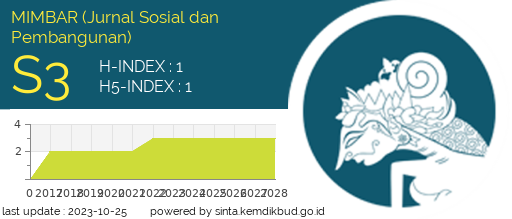The Effect Fears of Missing Out (Fomo) on Women Muslims Consumer
DOI:
https://doi.org/10.29313/mimbar.v39i2.2964Keywords:
Fears of Missing Out, Social Media Marketing, Influencer Marketing, Consumer BehaviourAbstract
The phenomenon of fear of missing out (FoMO) among the current generation Z has become a quite unique phenomenon from the perspective of consumer behavior. The FoMO phenomenon of cosmetic products is very interesting to see what factors can influence this. the emergence of FoMO behavior that has an impact on consumer behavior. This study uses a quantitative approach with non-probability sampling techniques because researchers do not know for sure the actual number of the study population. Purposive sampling was used in sampling in this research where respondent criteria were required to achieve the objectives of this research. Meanwhile, data analysis on this research uses structural equation modeling with SmartPLS software. The results show that the factors that influence FoMO arise significantly from the influence of Influencer Marketing and Social Media Marketing, where FoMO has a positive effect on changes in consumer behavior
References
Adobe (2018). Adobe experience manager 6.4: defining the next wave of content driven experiences. https://blogs.adobe.com/digitaleurope/digital-marketing/adobe-experience-manager-6-4-defining-the-next-wave-of-content-driven-experiences/.
Al-Banna, H. (2019). Muslim Customer Behavior In Halal Food Online Purchasing. Journal of Islamic Monetary Economics and Finance, 5(3), 517-540. https://doi.org/10.21098/jimf.v5i3.1152
Çelik, IK, and O Eru. 2019. The effects of consumers’ FoMO tendencies on impulse buying and the effects of impulse buying on post-purchase regret: an investigation on retail stores. BRAIN. Broad Research in Artificial Intelligence and Neuroscience. 10(3): 124– 138.
Chin WW. The partial least squares approach to structural equation modeling. Mod methods Bus Res. 1998;295(2):295–336
Dann, S., Dann, S. (2017). E-Marketing: Theory and Application. United Kingdom: Palgrave Macmillan.
Demirel, Y., & Yaşarsoy, E. (2017). Exploring Consumer Attitudes Towards Halal Products. Journal of Tourismology, 3(1), 34-43.
Endah Nawangsih, Siti Marliah Tambunan, & Dian Kemala Putri. (2023). Revisiting the Trust of Online Services Middle Age M-Health Users in Indonesia. MIMBAR : Jurnal Sosial Dan Pembangunan, 1(10), 218–227. https://doi.org/10.29313/mimbar.v39i1.2367
Euromonitor International. (2015). Consumer lifestyles in Indonesia. Passport.
Felix, R., Rauschnabel, P.A., & Hinsch, C., (2017). Elements of strategic social media marketing: A holistic framework. Journal of Business Research, 70, 118–126.
Fornell C, Larcker DF. Structural Equation Models with Unobservable Variables and Measurement Error: Algebra and Statistics. J Mark Res. 1981;
Hair JF, Hult GTM, Ringle CM, Sarstedt M, Thiele KO. Mirror, mirror on the wall: a comparative evaluation of composite-based structural equation modeling methods. J AcadMark Sci. 2017;45(5):616–32.
Hamdan, H., Issa, Z. M., Abu, N., & Jusoff, K. (2013). Purchasing Decisions among Muslim Consumers of Processed Halal Food Products. Journal of Food Products Marketing, 19(1), 54–61. https://doi.org/10.1080/10454446.2013.724365.
Harrison, K., (2017, January 9), Top 10 trends that will transform digital marketing in 2017. Retrieved from https://www.forbes.com/sites/kateharrison/2017/01/09/top-10-trendsthat-will-transform-digital marketing-in-2017/#7e6d507d3bf5
Juhlin, L., & Soini, M. (2018). How do influencer marketers affect brand associations?: A semiotic Instagram study in the sports fashion industry. http://www.diva-portal.org/smash/record.jsf?pid=diva2%3A1223967&dswid=-9073
Kang, I., Cui, H., & Son, J. (2019). Conformity consumption behavior and FoMO. Sustainability (Switzerland), 11(17). https://doi.org/10.3390/su11174734
Kotler, Philip and Kevin Lane Keller. (2016). Marketing Management, Edition 15, England: Pearson Education.
Khare A, Sadachar A, Chakraborty S. Influence of celebrities and online communities on Indian consumers’ green clothing involvement and purchase behavior. J Fash Mark Manag An Int J. 2021;
Permana, R. M. T., Rohandi, M. M. A., & Nugraha, Y. D. (2021). New Business Model For Creative Agency Through Influencer Marketing. Jurnal Manajemen Dan Bisnis Performa, 18(3), 11–19. https://doi.org/10.29313/performa.v18i3.8101
Peter, Paul, J., Olson Jerry C. (2013). Perilaku Konsumen dan Strategi Pemasaran, Edisi 9. Jakar ta: Salemba Empat.
Priporas, C.V., Stylos, N. and Kamenidou, I.E. (2019). City image, city brand personality and generation Z residents’ life satisfaction under economic crisis: predictors of cityrelated social media engagement. Journal of Business Research, 119, 453-463.
Shalmont, J. (2020). Sustainable Beauty: Kesiapan Konsumen Di Indonesia Dalam Mengintegrasikan Konsep Keberlanjutan Dalam Pengelolaan Sampah Kemasan Plastik Produk Industri Kecantikan. Law Review, 20(2), 1–23.
San, L.Y., Hock, N.T., & Yin, L.P. (2019). “Purchase Intention towards Korean Productsamong Generation Y in Malaysia”. European Proceeding of Social and Behavioral Sciences, 660 – 669
Santoso, I.H., Widyasari, S., & Soliha, E. (2021). “Fomsumerism : Mengembangkan Perilaku Conformity Consumption dengan Memanfaatkan Fear of Missing Out Konsumen”. Jurnal Ilmiah Bisnis dan Ekonomi Asia, 15(2), 159 – 171.
Stillman, D. & Stillman, J. 2018. Generasi Z: Memahami Karakter Generasi Baru yang akan Mengubah Dunia Kerja. Jakarta: PT. Gramedia Pustaka Utama.
Smith, K. T. (2019). Mobile advertising to Digital Natives: preferences on content, style, personalization, and functionality. Journal of Strategic Marketing, 27(1), 67-80.
Sun, Y., Wang, R., Cao, D., & Lee, R. (2022). Who are social media influencers for luxury fashion consumption of the Chinese Gen Z? Categorisation and empirical examination. Journal of Fashion Marketing and Management, 26(4), 603–621. https://doi.org/10.1108/JFMM-07-20200132
Sohaib, M., & Han, H. (2023). Building value co-creation with social media marketing, brand trust, and brand loyalty. Journal of Retailing and Consumer Services, 74, 103442. https://doi.org/https://doi.org/10.1016/j.jretconser.2023.103442.
Risal, M., & Aqsa, M. (2021). Consumer Loyalty as Impact of Marketing Mix and Customer Satisfaction. MIMBAR: Jurnal Sosial Dan Pembangunan, 37(2), 297–304. https://doi.org/10.29313/mimbar.v37i2.8055.
Razzaque, Mohamed Abdur, S. N. C. (2016). Religiosity and Muslim consumers’ decision-making process in a non-Muslim society. International Journal for Researcher Development, 7(1), 63–83. https://doi.org/http://dx.doi.org/10.1108/MRR-09-2015-0216
Tomoson. (2016), Influencer marketing study. Available from: http://blog.tomoson.com/influencermarketing-study/. Diaksses pada : 05/08/2021
Tapinfluence. (2017). Do micro-Influencers make better brand ambassadors than celebrities?. Dapat diakses di https://www.tapinfluence.com/micro-Influencers-make-better-brand ambassadorscelebrities
Thurau, Thorsten Hennig., Hofacker, C. F., & Bloching, B. (2013). Marketing the pinball way: Understanding how social media change the generation of value for consumers and companies. Journal of interactive marketing, 27(4), pp. 237–241.
Yadav, M., & Rahman, Z. (2017). Social media marketing: Literature review and future research directions. International Journal of Business Information Systems, 25 (2), 213–240.
Vodak, Josef, Cakanova, Lucia, Pekar, Miroslav and Novysedlak, Martin, (2019), Influencer Marketing as a Modern Phenomenon in Reputation Management, Managing Global Transitions, 17, issue 3 (Fall), p. 211-220.
Downloads
Published
Issue
Section
License
Copyright (c) 2023 MIMBAR : Jurnal Sosial dan Pembangunan

This work is licensed under a Creative Commons Attribution-NonCommercial-ShareAlike 4.0 International License.














